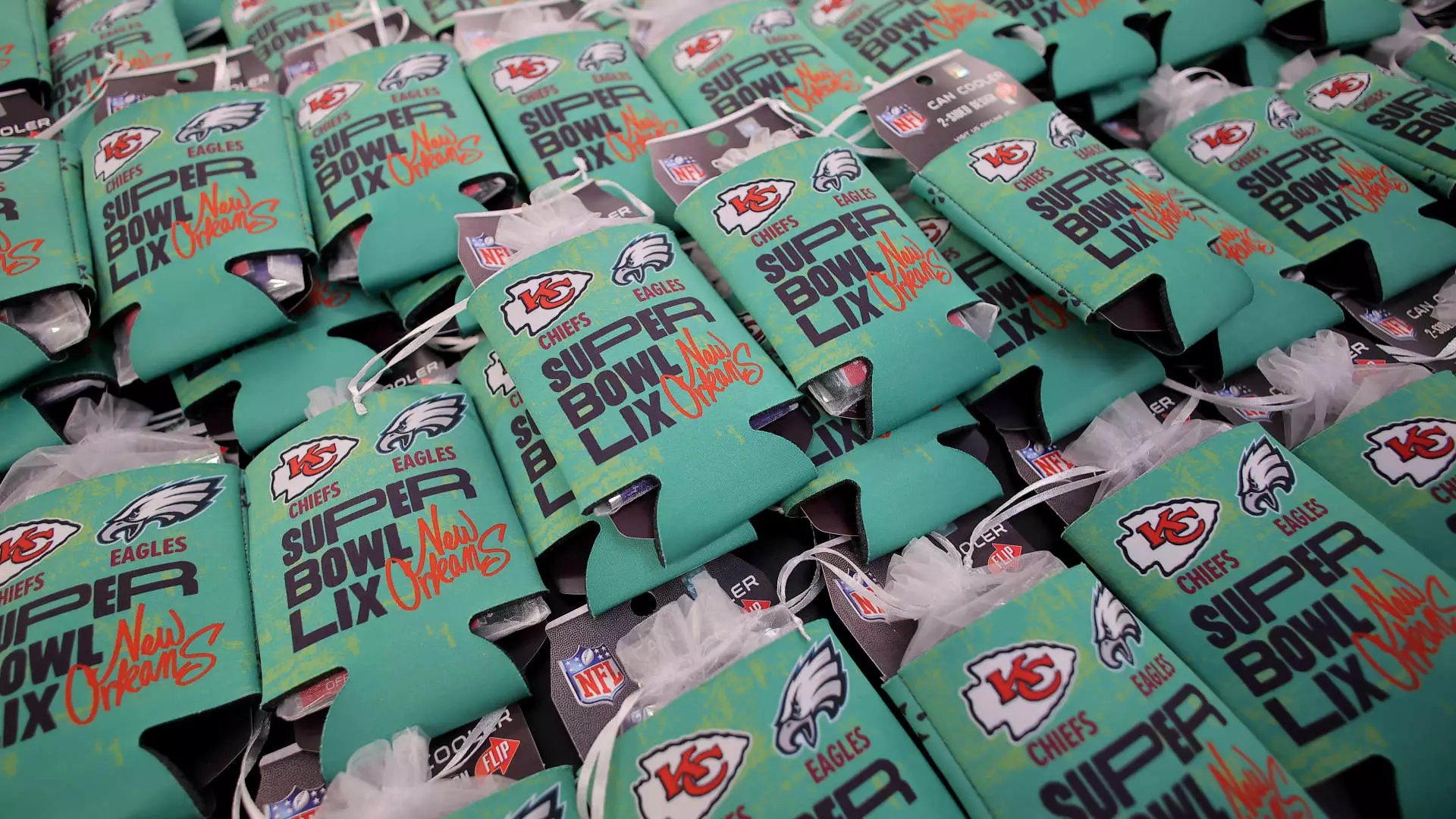The Super Bowl has historically been the crown jewel of advertising opportunities in the United States, with advertisers paying a staggering $8 million for a 30-second commercial slot. Such high stakes reflect not only a tradition of advertising during the big game but also the undiminished belief among media executives that these slots deliver unparalleled value. However, as media consumption continues to fragment and digital platforms gain traction, one must question whether the financial commitment to Super Bowl advertising truly merits the returns it guarantees.
The Super Bowl continues to attract an audience of over 100 million, a figure that seems to offer advertisers a prime opportunity. Executives like Amy Leifer from DirecTV tout the live-viewing scale as one of the key reasons brands invest heavily in these ad slots. “Where else can you get 100 million viewers at once?” she questions, emphasizing the rarity of such reach in today’s media environment. Nonetheless, this begs a critical examination of whether sheer viewer numbers equate to better brand engagement and conversion rates.
Though the quantity of viewers is impressive, the quality of engagement is crucial in determining an ad’s effectiveness. While the NFL’s championship game commands an audience, it remains essential to assess how effectively brands can translate eyeballs into consumer actions. Is the significant cost justified if the return on investment isn’t as substantial as one might presume? The idea that Super Bowl ads remain “three times as effective” as normal primetime slots, according to EDO data, raises further questions. This data suggests a benchmarking tool, yet it overlooks crucial variables like changing consumer behavior and the increasing influence of digital platforms.
In recent years, the advertising field has been experiencing a slow but steady transition. Digital platforms, social media, and streaming services are not merely auxiliary options; they are rapidly becoming the primary channels where brands communicate with consumers. Advertisements on these platforms tend to generate immediate, interactive engagements, enabling brands to have continual dialogues with customers post-ad. In stark contrast, a single Super Bowl commercial, while capable of creating a short-term buzz, may not sustain long-term consumer interest without a follow-up strategy.
Indeed, brands like Kia, Reese’s, and Popeye’s have effectively employed Super Bowl slots to launch new products, which subsequently garnered higher engagement. However, a deeper analysis suggests that the real magic lies in the execution of marketing strategies across platforms, both during and after the event. Advertisers that neglect to leverage social media during the game—where audiences increasingly flock for real-time interactions—may miss hyper-targeted opportunities that could amplify their message.
The recent undercurrent of hyperlocal advertising is noteworthy. Local spots, while available at more affordable rates, can yield considerable lifts in engagement. Companies like Zeam have experienced monumental boosts in app downloads after strategically timed local Super Bowl ads. The remarkable engagement reflects an essential truth about local advertising—it often engages audiences that represent significant market potential from a community perspective. National advertisers frequently overlook localized advertising strategies in their race for national reach, but localized ads can convert awareness into immediate action effectively.
Furthermore, the impact of precise timing during the Super Bowl plays a pivotal role in an ad’s success. Timing can dictate the emotional resonance that a brand’s message carries. If an audience is primarily engaged during the Halftime show or during specific moments in the game, brands need to time their ads circumspectly for maximum visibility and resonance.
As the advertising landscape is poised for transformation, brands must consider the shifting paradigms of media consumption. The advent of digital platforms has significantly altered how consumers interact with advertisements. Estimates predict that spending on digital advertising will considerably outpace traditional TV over the next few years, leading many industry commentators to question if the Super Bowl’s allure and effectiveness are dated narratives.
Yet, there remains a faction that holds the belief that Super Bowl advertising still holds an irreplaceable place in the marketing sphere. Shoshana Winter, for example, argues that while traditional TV may not be the only viable avenue anymore, it remains a go-to option for brands seeking to reach a colossal, captive audience.
All things considered, brands must grapple with the duality of maximizing their investment by harmonizing the nostalgia and cutthroat competitiveness of Super Bowl spots with innovative approaches across diverse media. With digital engagement playing an increasingly critical role, the advertising industry stands at a crossroads, challenged to redefine itself amid evolving consumer behaviors. The balance between traditional allure and modern strategy may dictate the trajectory of its future.

